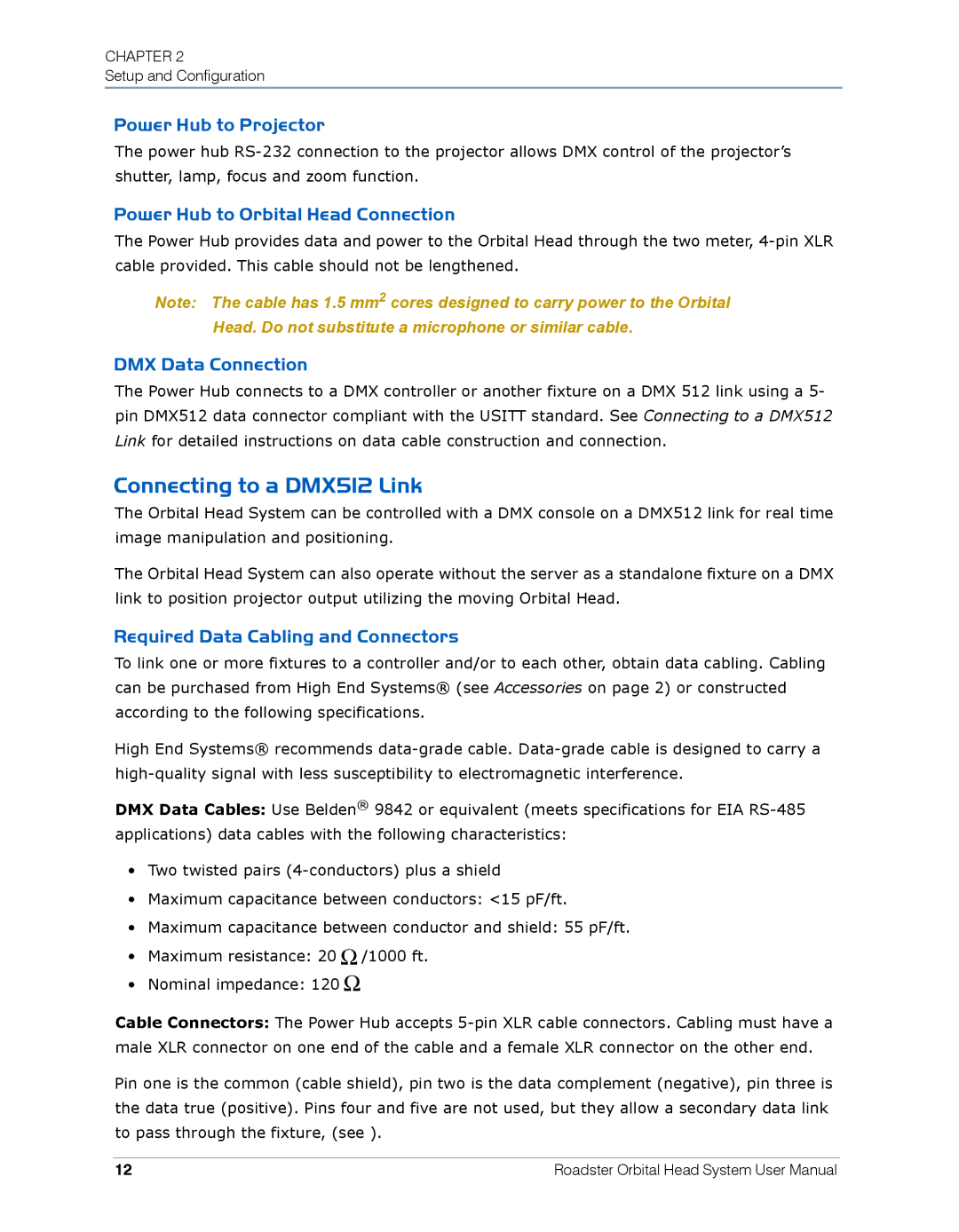
CHAPTER 2
Setup and Configuration
Power Hub to Projector
The power hub
Power Hub to Orbital Head Connection
The Power Hub provides data and power to the Orbital Head through the two meter,
Note: The cable has 1.5 mm2 cores designed to carry power to the Orbital Head. Do not substitute a microphone or similar cable.
DMX Data Connection
The Power Hub connects to a DMX controller or another fixture on a DMX 512 link using a 5- pin DMX512 data connector compliant with the USITT standard. See Connecting to a DMX512 Link for detailed instructions on data cable construction and connection.
Connecting to a DMX512 Link
The Orbital Head System can be controlled with a DMX console on a DMX512 link for real time image manipulation and positioning.
The Orbital Head System can also operate without the server as a standalone fixture on a DMX link to position projector output utilizing the moving Orbital Head.
Required Data Cabling and Connectors
To link one or more fixtures to a controller and/or to each other, obtain data cabling. Cabling can be purchased from High End Systems® (see Accessories on page 2) or constructed according to the following specifications.
High End Systems® recommends
DMX Data Cables: Use Belden® 9842 or equivalent (meets specifications for EIA
•Two twisted pairs
•Maximum capacitance between conductors: <15 pF/ft.
•Maximum capacitance between conductor and shield: 55 pF/ft.
•Maximum resistance: 20 ![]() /1000 ft.
/1000 ft.
•Nominal impedance: 120 ![]()
Cable Connectors: The Power Hub accepts
Pin one is the common (cable shield), pin two is the data complement (negative), pin three is the data true (positive). Pins four and five are not used, but they allow a secondary data link to pass through the fixture, (see ).
12 | Roadster Orbital Head System User Manual |
